Ladakhi Traditional Wear
People from Ladakh are quite different from the rest of India, their physique, food, clothing, culture, and ethnicity are mostly similar to the people of Tibet and Central Asia. One of the most outstanding features in the society of Ladakh is that women enjoy liberty and equality and have a very high status in society. The permissible age for a girl to get married is 12 year old, the bride’s family is supposed to gift animals, clothes, and land for the couple as a dowry, the tradition of where the groom comes to stay with the bride’s family is not considered a taboo. The practice of polyandry has mostly disappeared today when were made illegal by the government in the 1940s.
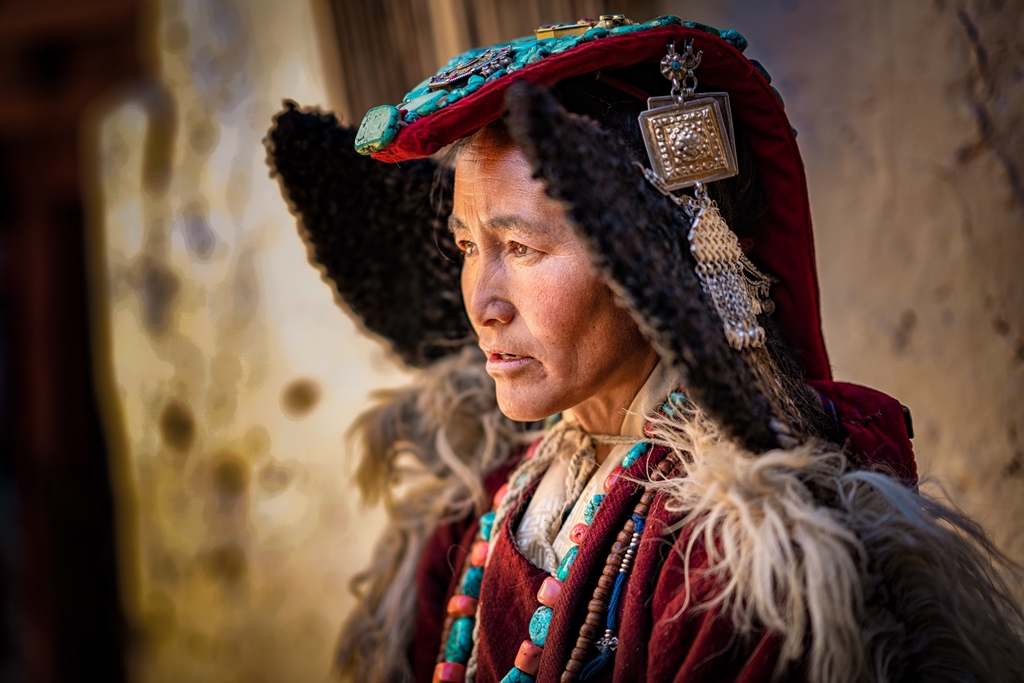
Her name is Dolma from Gya Village, she is wearing her traditional wear.
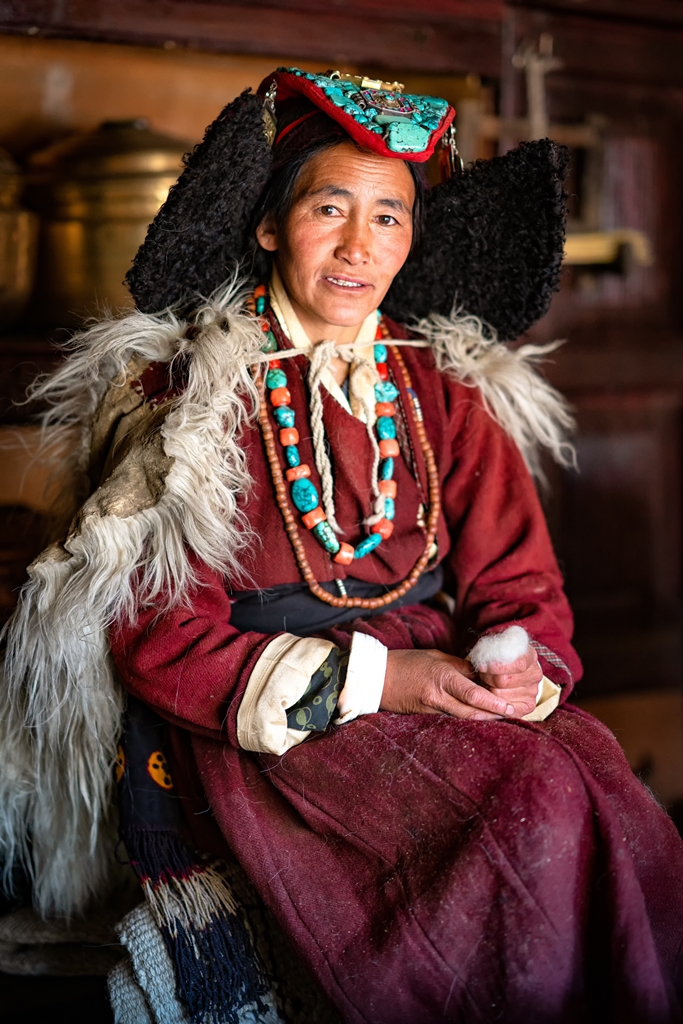
Perak – The headdress, Bok – This is a shawl, Kuntop – The robe
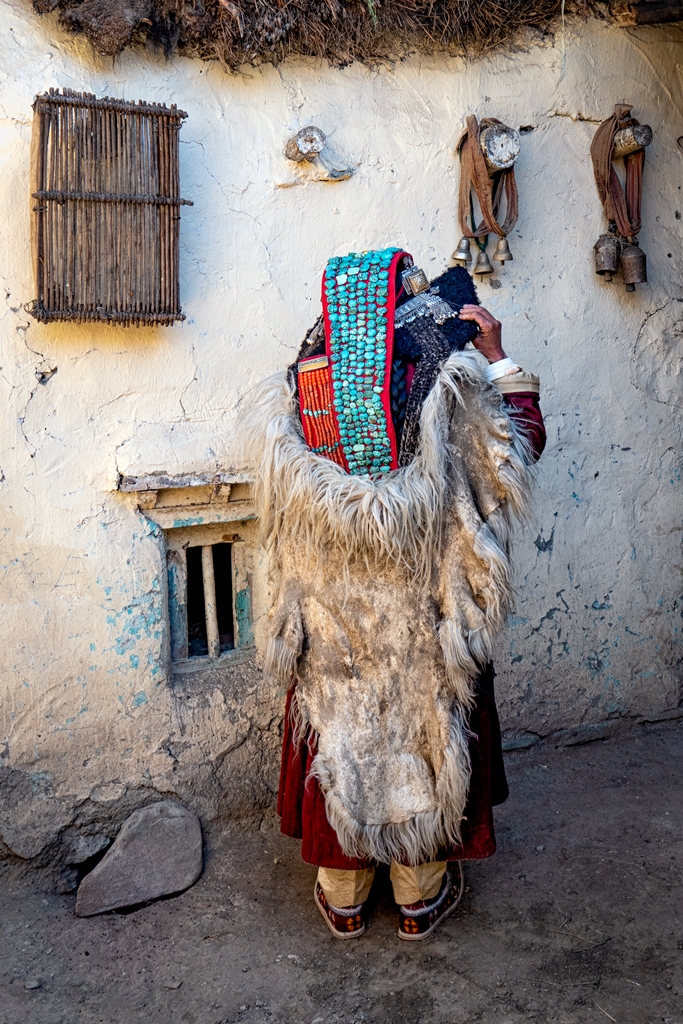
Perak – The headdress, was inherited from previous generation. The Perak is usually studded with semi-precious stones such as turquoise.
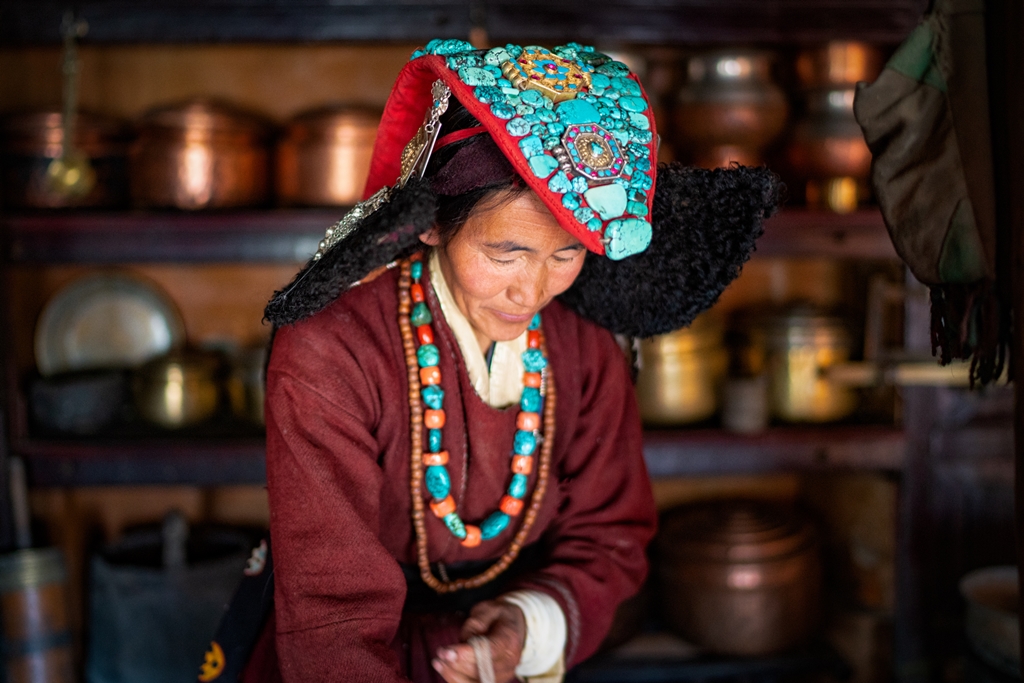
The traditional Perak has three, five, seven or nine lines of turquoise, according to the rank of the wearer. Only the very richest and royalist of families could wear nine lines. When the woman dies the Perak passes to the eldest child of her family.
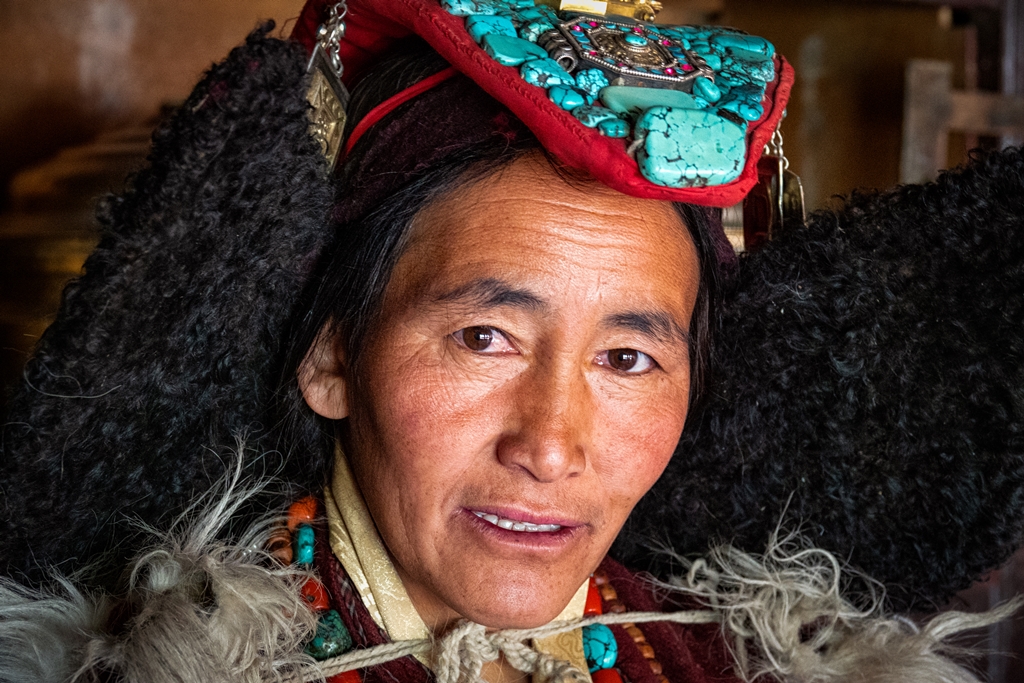
Kuntop – This is the woollen robe that Dolma wear
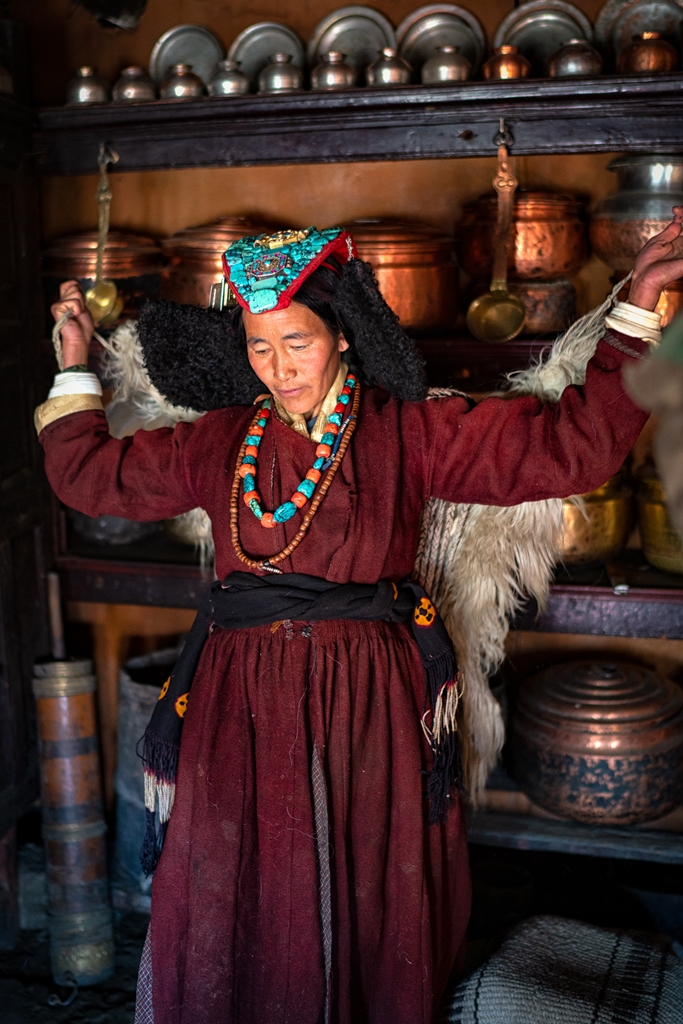
Bok – This is a shawl that comes in various patterns and colours which is worn by women to usually carry their small children.
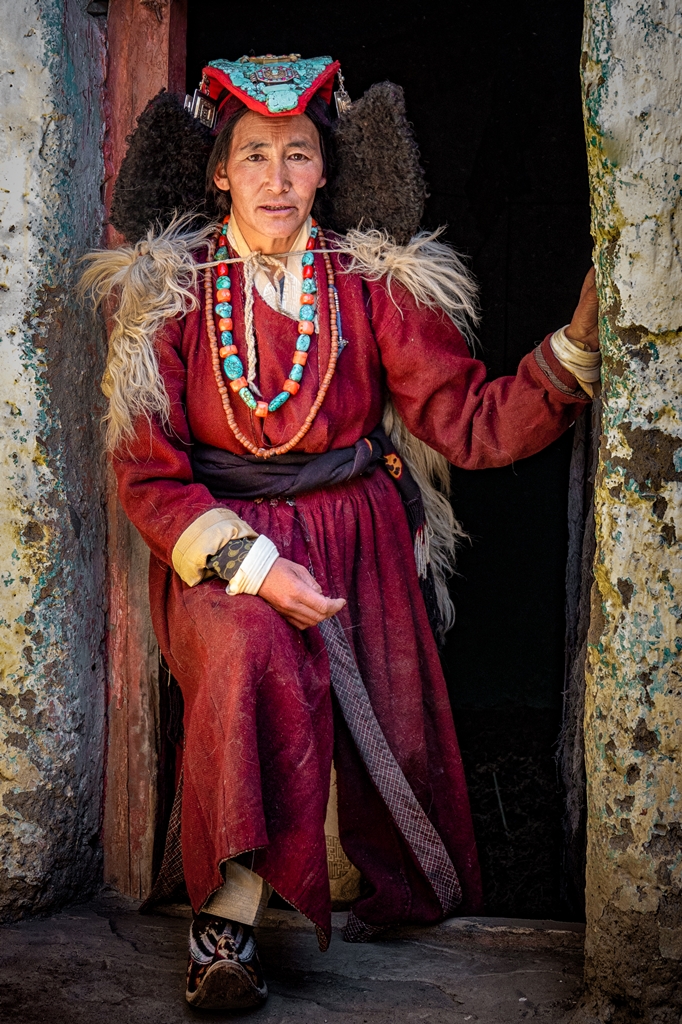
The traditional shoes (Papu) are made up of woven Yak hair or wool with a sole of Yak leather to keep their feet warm in the cold weather.
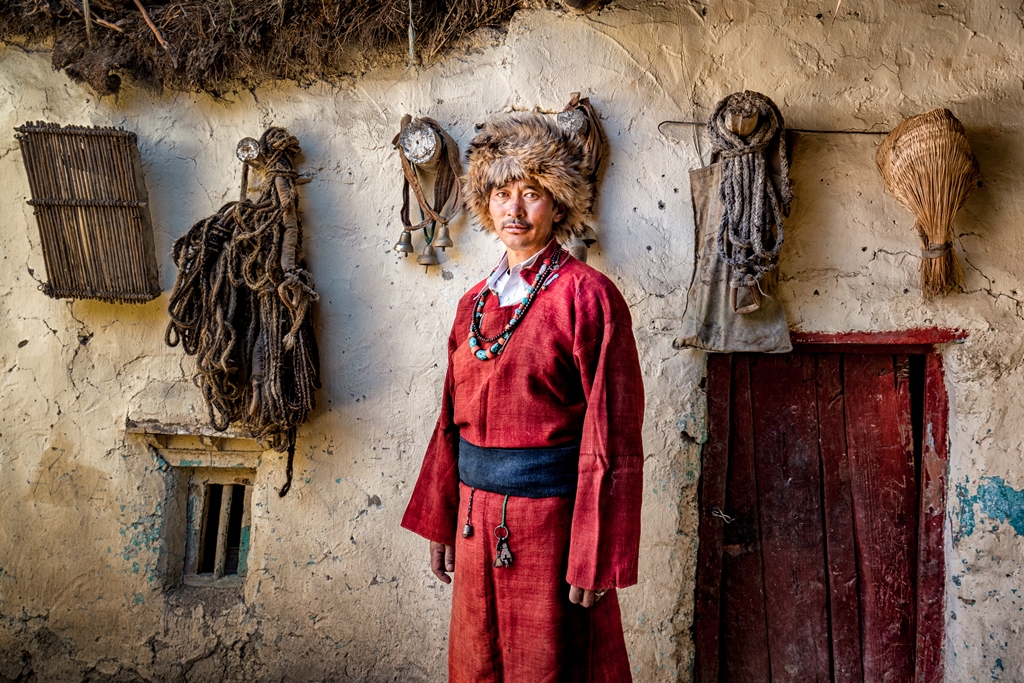
He is wearing “Goucha” A traditional woolen robe worn by men, Due to the extreme climate there, they have to wear a thick robe made of yak wool.
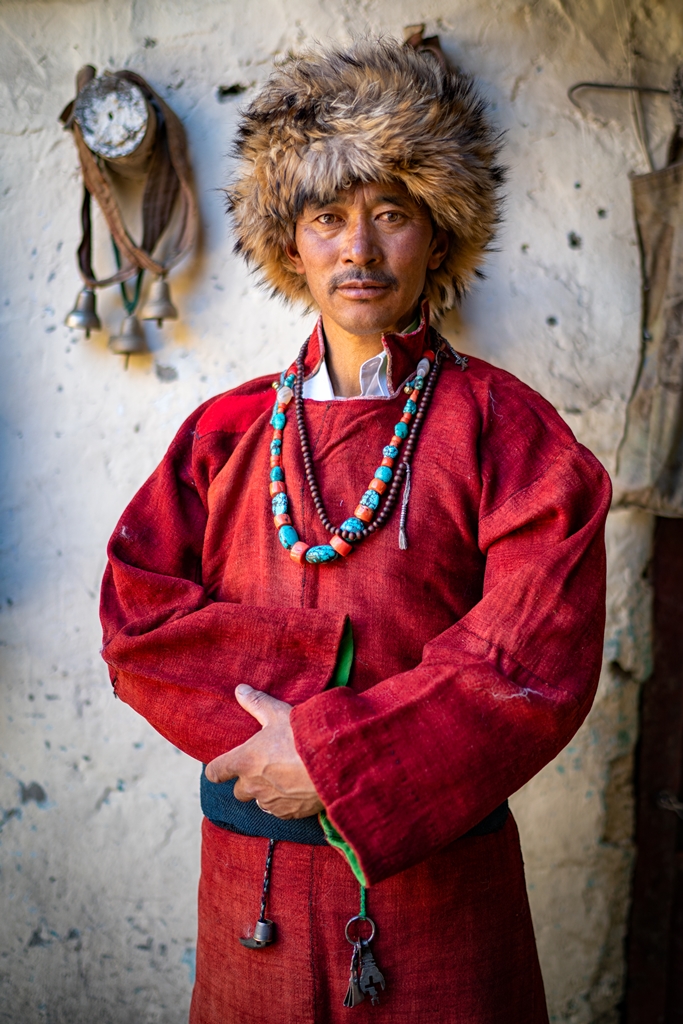
The waistband (Skerag) is about two meters long and 20 cm wide that is worn by the men to tie their robes with many trinkets attached to it.
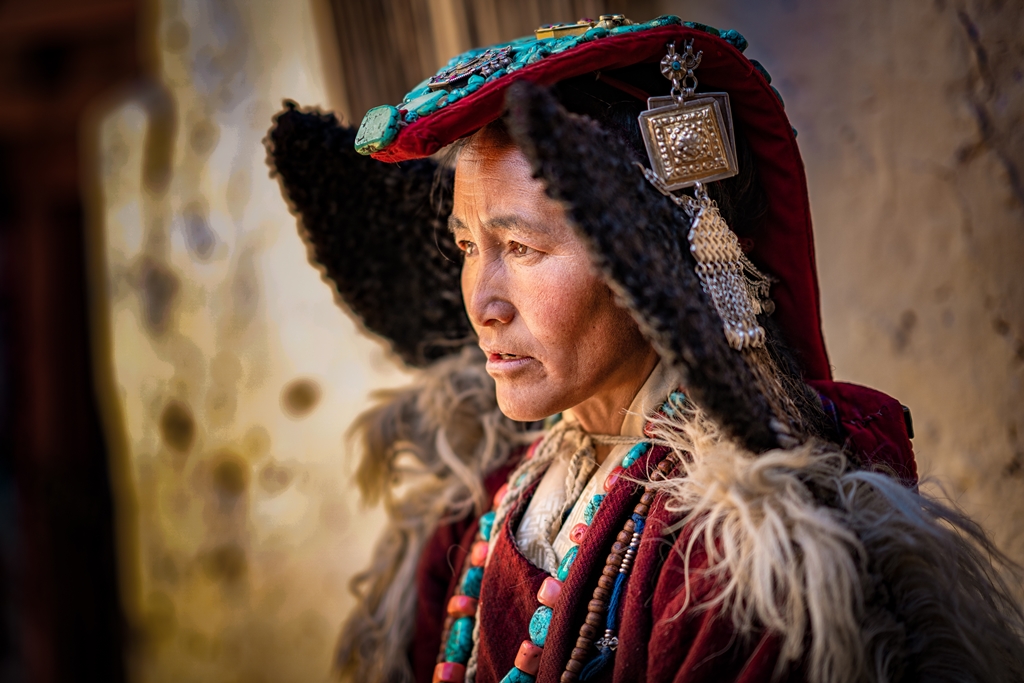
No Comments